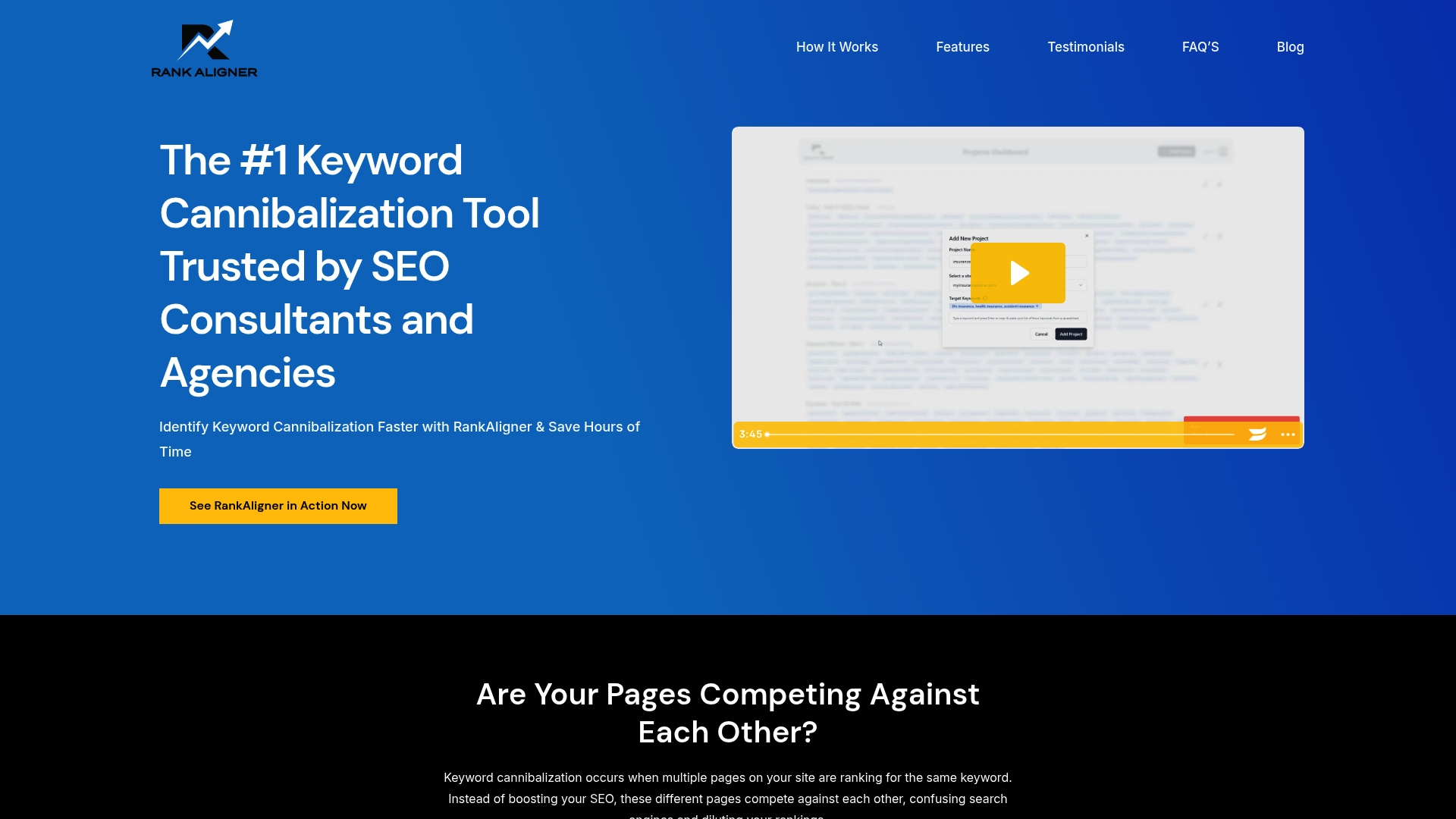Everybody wants their website to land on page one of Google. Turns out, over 70 percent of all search traffic comes from long tail keywords. Most people think the secret to more clicks is to chase those big, popular keywords. The real trick is to go after the tiny phrases hardly anyone talks about and watch your chances for ranking and conversions shoot way up.
Table of Contents
- What Are Long Tail Keywords And Why Use Them?
- The Importance Of Long Tail Keywords In Seo Strategy
- How Long Tail Keywords Enhance Search Intent Matching
- Real-World Examples Of Long Tail Keywords Benefits
- Understanding The Competitive Advantage Of Long Tail Keywords
Quick Summary
| Takeaway | Explanation |
|---|---|
| Long tail keywords target specific search intents | They consist of three or more words, providing users with tailored results based on their intentions. |
| Lower competition increases visibility | Long tail keywords face less competition, making it easier for websites to rank higher in search results. |
| Higher conversion potential for businesses | Users searching with long tail keywords often have clear buying intents, leading to higher conversion rates. |
| Essential for niche marketing strategies | They allow businesses to connect with specialized audience segments, enhancing relevance and authority. |
| Improvement in SEO through user intent alignment | By matching precise queries, websites can enhance visibility and meet user needs effectively. |
What Are Long Tail Keywords and Why Use Them?
Long tail keywords are highly specific search phrases that contain three or more words, typically representing a more precise user search intent. Unlike broad, generic keywords, these phrases are less competitive and offer targeted opportunities for SEO success. Research from Moz reveals that long tail keywords help sites attract visitors who are more likely to convert due to the specificity of their search queries.
Understanding Long Tail Keyword Structure
A long tail keyword might look like “affordable organic dog food for senior dogs” instead of a generic term like “dog food”. These extended phrases provide several strategic advantages for content creators and marketers:
- Represent more specific user search intentions
- Have lower search volume but higher conversion potential
- Often demonstrate clearer buyer or research intent
Why Long Tail Keywords Matter for SEO
Search engines increasingly prioritize user intent and contextual relevance. Long tail keywords enable websites to:
- Match precise user queries more effectively
- Reduce competition compared to broad keywords
- Create more targeted and relevant content
- Improve overall website visibility for niche audiences
By targeting these specific phrases, businesses can develop more strategic content approaches that speak directly to user needs, ultimately driving more qualified traffic and potential conversions.
The Importance of Long Tail Keywords in SEO Strategy
Ahrefs research demonstrates that long tail keywords play a critical role in modern SEO strategies by offering nuanced opportunities for visibility and targeted audience engagement. While generic keywords attract broad traffic, long tail keywords enable precise audience targeting and higher conversion potential.
Strategic Competitive Advantages
Long tail keywords provide significant strategic advantages for digital marketing efforts. Businesses can leverage these specific search phrases to:
- Bypass intense competition for generic head terms
- Target users with more specific search intentions
- Create highly relevant content that matches exact user queries
- Improve overall website ranking for specialized topics
Conversion and User Intent Alignment
Understanding user intent becomes exponentially more effective with long tail keywords. These phrases reveal deeper insights into what users truly seek, moving beyond surface level searches. For instance, someone searching “running shoes” has different intentions compared to someone searching “lightweight marathon training shoes for flat feet”.
By understanding the nuances of SEO strategy, businesses can craft content that not only ranks well but also directly addresses specific user needs. This approach transforms keyword research from a numbers game into a precise art of audience connection.
The power of long tail keywords lies in their ability to bridge the gap between broad search terms and specific user requirements, making them an indispensable tool in sophisticated SEO approaches.
This table highlights the main competitive advantages of long tail keywords as described in the article, summarizing each feature and its associated benefit for SEO and digital marketing success.
| Competitive Advantage | Description | SEO Benefit |
|---|---|---|
| Lower Competition | Fewer websites target highly specific keyword phrases | Easier to achieve higher rankings |
| Higher Conversion Potential | Attracts users with precise and actionable search intents | Increased likelihood of conversions |
| Greater Content Relevance | Enables production of targeted, authoritative content | Enhanced reader engagement |
| Reduced Advertising Costs | Lower competition results in decreased cost-per-click | More affordable marketing campaigns |
| Strategic Niche Positioning | Allows focus on less-served market segments | Stronger niche authority and visibility |
How Long Tail Keywords Enhance Search Intent Matching
Search intent research reveals that understanding user motivation is crucial in modern SEO strategies. Long tail keywords play a pivotal role in deciphering and matching precise user search intentions, transforming how websites connect with their target audience.
Decoding User Search Motivations
Search intent can be categorized into four primary types, and long tail keywords help websites target these intentions with remarkable precision
To clarify the different types of search intent discussed in the article, the table below categorizes intent types alongside their descriptions and examples.
| Search Intent Type | Description | Example Search Query |
|---|---|---|
| Informational Intent | User seeks knowledge or an answer to a question | “how to train a senior dog” |
| Navigational Intent | User wants to find a specific website or page | “Petco store locator” |
| Transactional Intent | User is ready to make a purchase | “buy affordable organic dog food for senior dogs” |
| Commercial Investigation | User is comparing products before making a decision | “best lightweight marathon training shoes for flat feet” |
![]() :
:
- Informational Intent: Users seeking knowledge or answers
- Navigational Intent: Users looking for specific websites or pages
- Transactional Intent: Users ready to make a purchase
- Commercial Investigation Intent: Users comparing products before buying
Precision in Content Relevance
Long tail keywords act as a sophisticated lens for understanding nuanced user queries. For example, while “laptop” represents a broad search, “best lightweight laptop for graphic designers under $1000” provides crystal clear insight into the user’s specific requirements. This granularity enables content creators to craft highly targeted material that directly addresses user needs.
By matching search intent through detailed keyword phrases, websites can dramatically improve their chances of ranking higher and attracting genuinely interested visitors.
The more precisely a piece of content matches a user’s specific search query, the more likely it is to be deemed relevant by search engine algorithms.
Ultimately, long tail keywords serve as a bridge between user expectations and content delivery, ensuring that websites speak directly to their audience’s most specific and nuanced search intentions.
Real-World Examples of Long Tail Keywords Benefits
WordStream research demonstrates that businesses leveraging long tail keywords can significantly improve their digital marketing performance across multiple industries and objectives.
E-Commerce Success Stories
In online retail, long tail keywords offer powerful targeting opportunities. Consider a specialized outdoor equipment store competing against major brands. Instead of targeting generic terms like “hiking boots,” they might optimize for “waterproof hiking boots for wide feet” or “lightweight trail running shoes for mountain terrain”. These specific phrases enable:
- Direct connection with highly motivated buyers
- Lower advertising costs
- Higher conversion rates
- Reduced competition from larger retailers
Niche Content Marketing Strategies
Content creators and bloggers can dramatically enhance their visibility by embracing long tail keywords. A fitness blog might transform a generic topic like “weight loss” into highly targeted content such as “low-impact weight loss exercises for seniors with joint pain”. Exploring semantic search techniques can further refine these strategies.
By addressing specific user needs with precision, websites can attract audiences seeking expert, nuanced information. This approach transforms broad content into specialized, valuable resources that search engines recognize and reward.
Understanding the Competitive Advantage of Long Tail Keywords
Backlinko research reveals that long tail keywords provide businesses with a strategic competitive edge by enabling targeted visibility in increasingly crowded digital marketplaces. These specialized keyword phrases represent a sophisticated approach to search engine optimization that goes beyond traditional broad-term targeting.
Market Penetration and Niche Dominance
Long tail keywords offer businesses unique opportunities to penetrate market segments that larger competitors often overlook. By focusing on highly specific search queries, companies can establish themselves as authoritative voices within precise niches:
- Lower Competition: Fewer websites target extremely specific phrases
- Higher Relevance: Direct match to user’s exact search intent
- More Affordable: Reduced advertising costs compared to generic keywords
- Faster Ranking: Easier to achieve top search positions
Strategic Positioning Against Larger Competitors
Smaller businesses and niche content creators can effectively compete with industry giants by leveraging long tail keywords. Instead of battling for generic terms, they can create targeted content that speaks directly to specific audience segments. Optimize your SEO copywriting strategies to maximize these opportunities.
Ultimately, long tail keywords transform search engine optimization from a volume game into a precision strategy. By understanding and targeting the most specific user needs, businesses can carve out their unique space in the digital ecosystem, attracting highly motivated visitors who are more likely to convert.

Take Control of Your Long Tail Keyword Success
Are you struggling to identify which long tail keywords are truly pushing your SEO forward The article showed how crucial these phrases are for driving precise search intent and beating the competition yet targeting too many can quietly cause keyword cannibalization and undermine your hard-earned rankings. You want every targeted page on your site to convert but overlap can leave you confused about which keywords belong where and what updates to prioritize.

Stay ahead of the SEO curve and ensure your content works as hard as you do. With RankAligner you can uncover hidden keyword cannibalization issues from your long tail targeting efforts and organize your SEO strategy for maximum impact. Act now to clean up your keywords and start seeing stronger results. Visit our homepage to discover how expert consultants and agencies optimize their success with our trusted tool.
Frequently Asked Questions
What are long tail keywords?
Long tail keywords are specific search phrases that contain three or more words, representing precise user search intent. They differ from generic keywords by having lower competition and higher conversion potential.
Why are long tail keywords important for SEO?
Long tail keywords help match user intent more effectively, allowing websites to create targeted content that addresses specific user needs, which can improve overall visibility and ranking in search engines.
How do long tail keywords improve conversion rates?
Long tail keywords often have higher conversion potential because they cater to users with specific search intents, meaning they are more likely to attract visitors who are ready to make a purchase or engage with the content.
How can I find effective long tail keywords for my content?
You can find effective long tail keywords using various tools, including keyword research tools, Google Search suggestions, and analyzing competitor content to identify specific phrases that align with your audience’s search behavior.

